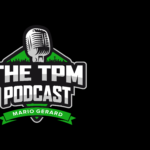Managing stakeholders as a Technical Program Manager (TPM) can feel like playing referee in a game where each player has different goals and rules—and sometimes, the rules change mid-game! Your ability to manage these dynamics while keeping the program on track is what sets you apart as a successful TPM. This article also helps you crystallize your answer to stakeholder management related questions in an interview. Let’s dive into actionable strategies for excelling in this critical aspect of the role.
1. Understand the Game
Before you can manage stakeholders effectively, you need to understand what success looks like for each of them. Different stakeholders will have different priorities—engineering may focus on technical feasibility, while product teams prioritize user needs and timelines.
Actionable Tips:
- Map stakeholder goals: Create a stakeholder matrix to identify their roles, influence, and objectives.
- Align expectations: Schedule 1:1 meetings early in the program to understand their vision, pain points, and concerns.
- Speak their language: Use terminology and data points that resonate with each stakeholder group. Engineers value technical precision, while product leaders prioritize business outcomes.
2. Communicate Clearly and Proactively
Clear communication is the cornerstone of effective stakeholder management. Ambiguity creates friction, while transparency builds trust.
Actionable Tips:
- No surprises: Proactively share updates on risks, timelines, and dependencies. Stakeholders appreciate being looped in before a problem becomes visible.
- Tailor your medium: Some stakeholders prefer Slack updates, others want detailed emails or dashboards. Ask what works best for them.
- Back it with data: Whether it’s a risk update or a progress report, use data to reinforce your points. For example, include metrics like bug counts, sprint velocity, or cost analysis.
3. Engage Actively Through Listening
Active listening is more than just hearing words; it’s about understanding concerns, reading between the lines, and showing empathy.
Actionable Tips:
- Listen to understand, not to respond: Take notes during discussions to ensure you fully grasp their concerns. Summarize their points to confirm your understanding.
- Ask open-ended questions: Encourage stakeholders to share deeper insights into their challenges. For example, “What risks do you see that we might be missing?”
- Follow up: After every meeting, send a recap email highlighting key decisions and next steps. This shows you value their input and ensures alignment.
4. Anticipate and Address Issues Proactively
Stakeholders trust TPMs who foresee challenges and provide solutions before problems escalate. This requires constant vigilance and adaptability.
Actionable Tips:
- Monitor risks closely: Use risk logs to track potential issues and mitigation plans. Share these with stakeholders during regular updates.
- Prepare for tough conversations: If you anticipate pushback on a decision or delay, address it directly and honestly. Bring data and solutions to the table.
- Stay ahead of dependencies: Work with cross-functional teams to identify blockers and resolve them before they impact timelines.
5. Manage Conflicts Like a Pro
Conflicts are inevitable when multiple stakeholders with varying priorities are involved. Your role as a TPM is to mediate and find a path forward.
Actionable Tips:
- Stay neutral: Avoid taking sides. Instead, focus on the program’s overall objectives and guide discussions toward a win-win resolution.
- Facilitate compromise: Help stakeholders prioritize their asks based on impact, effort, and alignment with program goals.
- Escalate thoughtfully: When conflicts cannot be resolved, escalate to leadership with a well-documented summary of the issue and recommended solutions.
6. Keep the Program on Track
At the heart of stakeholder management is your ability to deliver programs successfully. Stakeholders will stay happy if the program remains on schedule and aligned with their goals.
Actionable Tips:
- Use milestones: Break your program into clear, measurable milestones to show progress and provide opportunities for alignment.
- Over-communicate on timelines: Provide regular updates on the timeline, highlighting what’s done, what’s next, and any risks to delivery.
- Celebrate wins: Acknowledge and share team successes. This boosts morale and keeps stakeholders engaged.
7. Build Long-Term Relationships
Happy stakeholders aren’t just a short-term goal—they’re essential for your long-term success as a TPM. Building trust and rapport takes effort but pays dividends over time.
Actionable Tips:
- Be dependable: Follow through on commitments, no matter how small.
- Show empathy: Understand the challenges stakeholders face and find ways to support them.
- Pay it forward: Help stakeholders solve problems outside your immediate program scope—it builds goodwill and strengthens relationships.
8. Staying Sane as a TPM
Managing stakeholders while keeping programs on track can feel overwhelming, but staying sane is just as important as delivering results. Prioritize self-care by setting boundaries—block time for deep work and don’t let every meeting invite derail your day. Leverage tools and templates to streamline repetitive tasks, so you can focus on high-impact activities. Build a support network of peers or mentors to share challenges and brainstorm solutions. And most importantly, don’t lose your sense of humor—sometimes, laughter is the best way to navigate chaos and remind yourself that you’re making a difference, one milestone at a time!
Conclusion: The Stakeholder Balancing Act
Keeping stakeholders happy isn’t about avoiding conflicts or pleasing everyone—it’s about creating alignment, fostering trust, and ensuring the program delivers value. By understanding their goals, communicating effectively, and managing conflicts thoughtfully, you can keep stakeholders engaged and supportive throughout your program.
Ready to level up your TPM Career?
Unlock your potential as a TPM—master the fundamentals, navigate career levels, and excel in your role.
Author

Preetha Annamalai
Preetha Annamalai is an ex-Amazon Senior Manager who has led cross-functional software, TPM, and product teams. She has 18+ years of experience driving strategic initiatives and fostering innovation. Preetha excels at building high-performance teams and guiding professionals to reach their full potential.

















